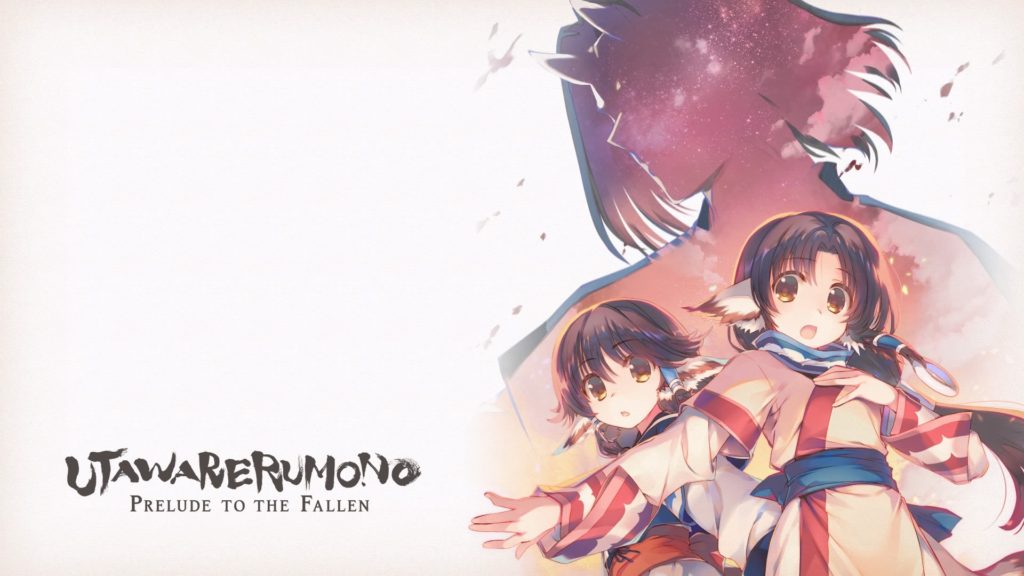
It’s been a rather circuitous route to get here. If you’re not familiar with Utawarerumono, chances are you’re not a big visual novel fan. It’s a fairly narrow fanbase to begin with and the games haven’t had a massive release or much merchandising. In Japan, the series is noticeably more popular, spawning the initial game on PC in 2002, followed by radio programs, a manga, an anime, and two sequel games, as well as a musou spin-off that was released domestically and that we recently reviewed here.
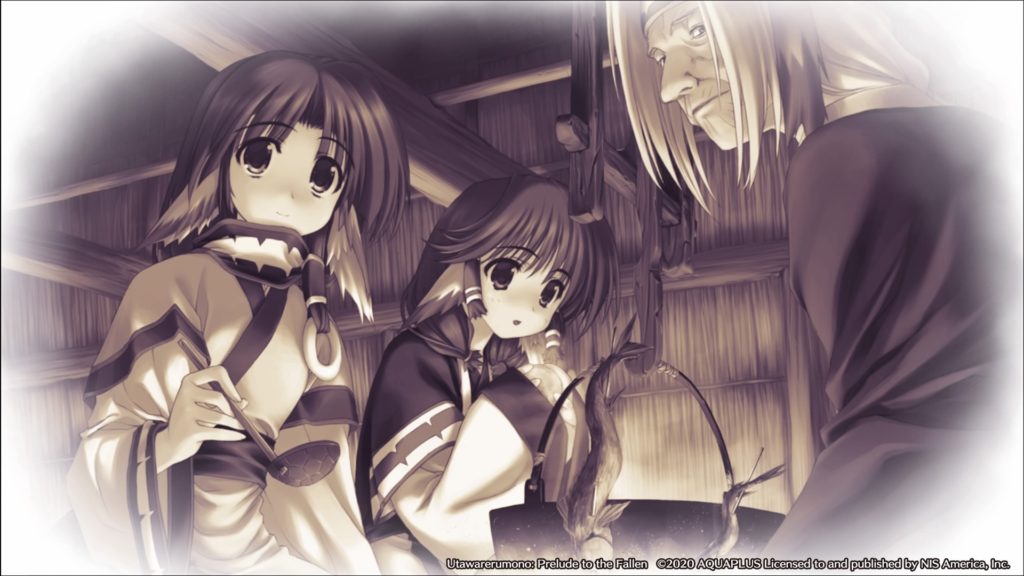
Both the second game (Utawarerumono: Mask of Deception) and the third (Utawarerumono: Mask of Truth) were released domestically in English for the PS Vita and the PS4. However, this was an odd choice because of the structure of the series. Mask of Deception picks up right in the middle of the story and while you can muddle through and kind of figure out what’s going on, it’s honestly more than a bit confusing especially at first. This is a trilogy that’s heavily dependent on the first game’s plot, and that was never released in English until now. That means, if you’ve never played the series before, this is definitely the time to start! And coming from the likes of Aquaplus and Sting Entertainment, you know you’re in for a treat! Don’t worry, as this isn’t simply a visual novel either! There’s a fairly robust tactical component that melds gameplay with your reading experience!
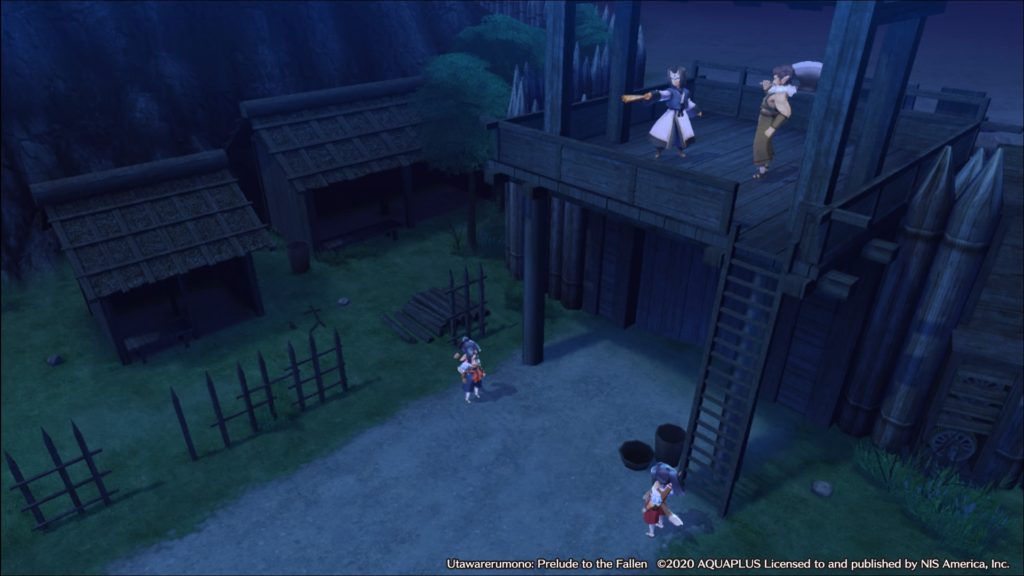
Utawarerumono: Prelude to the Fallen, published domestically by NIS America, is the first game in the trilogy and follows the story of Hakuowlo, a young man with a rather odd mask affixed to his face who wakes up with the requisite amnesia to match his unusual situation. Yes, yes, amnesia trope, move on. Anyway, he’s found by Eruruu, a young girl who, well, happens to have fuzzy ears and a tail. Wait, don’t leave! This isn’t a furry sex romp! The characters, character designs and art style in Utawarerumono are based on the Ainu people of Japan, a largely unknown native population that has been almost entirely assimilated by the Japanese people themselves.
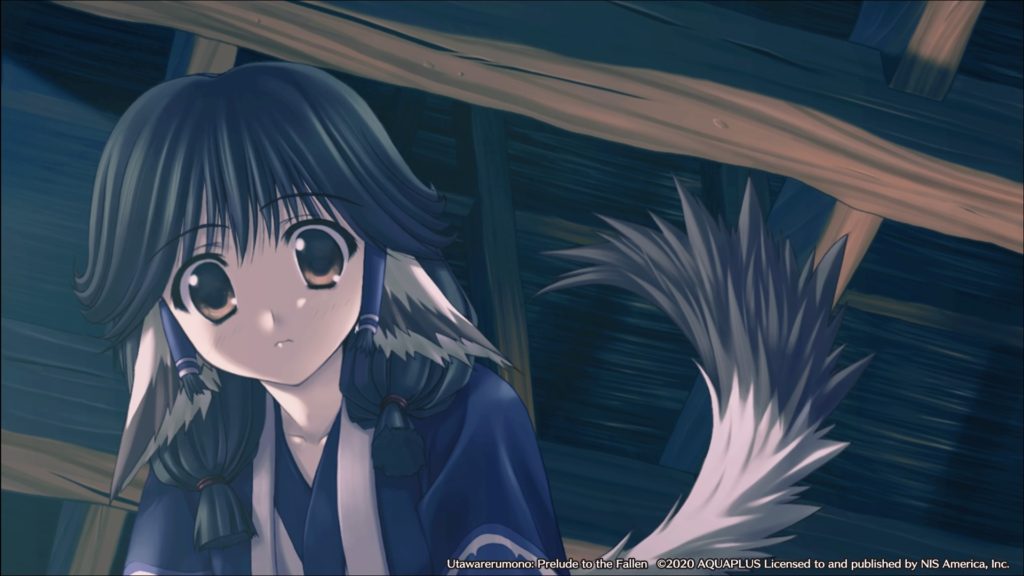
In point of fact, many Japanese are even unfamiliar with the Ainu and might not know that they are part of their ancestry. The now-postponed 2020 Olympics was even supposed to have a traditional Ainu dance in the opening ceremony, but it was cut before the cancellation of the event as a whole. Regardless, Eruruu and her fellow villagers are intended to depict the Ainu in all their cultural glory, and the entirety of Utawarerumono: Prelude to the Fallen is a bit of a snapshot into their culture by way of modern gaming.
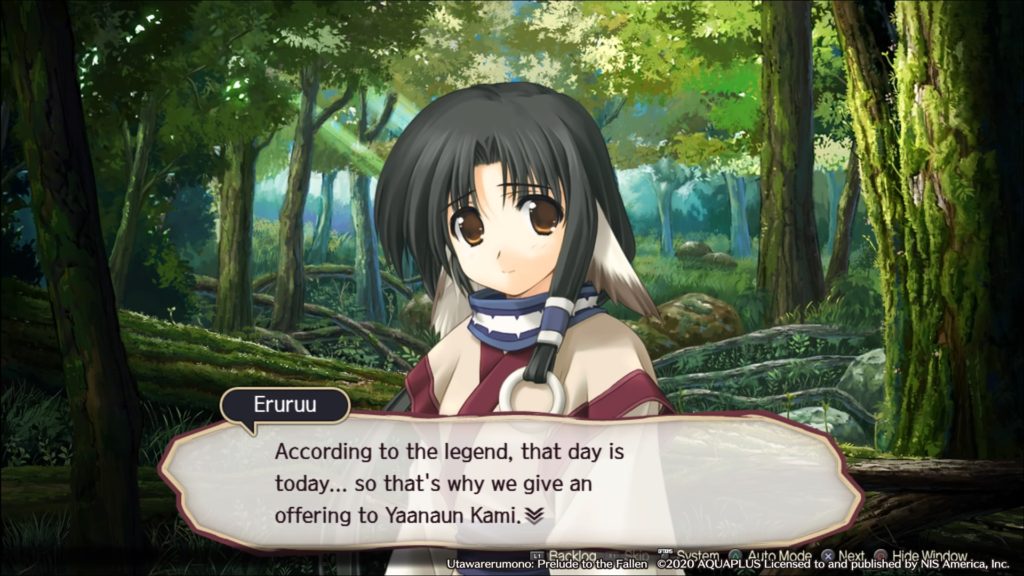
Eruruu and her family rescue Hakuowlo (which is ridiculously hard to pronounce) and nurse him back to health. He becomes part of the community bit by bit and that’s how our story begins. Utawarerumono is a straight visual novel with virtually no choices to be made. A fair amount of the game is spent reading dialogue. Fortunately, that dialogue is incredibly well-written and the characters are not only compelling but create a surprisingly strong emotional resonance. Everyone is interesting and unique, the script is excellent, the comedy is kept in check, and there’s no overt sexuality. To be fair, the Japanese PS2 version cut out any sexually explicit scenes from the original game and they were not added back in any subsequent releases, and honestly, the game shouldn’t have it anyway. It’s perfect as it is. For a game that offers virtually no choice in the story, that’s a bold statement, but Utawarerumono is simply fantastic.
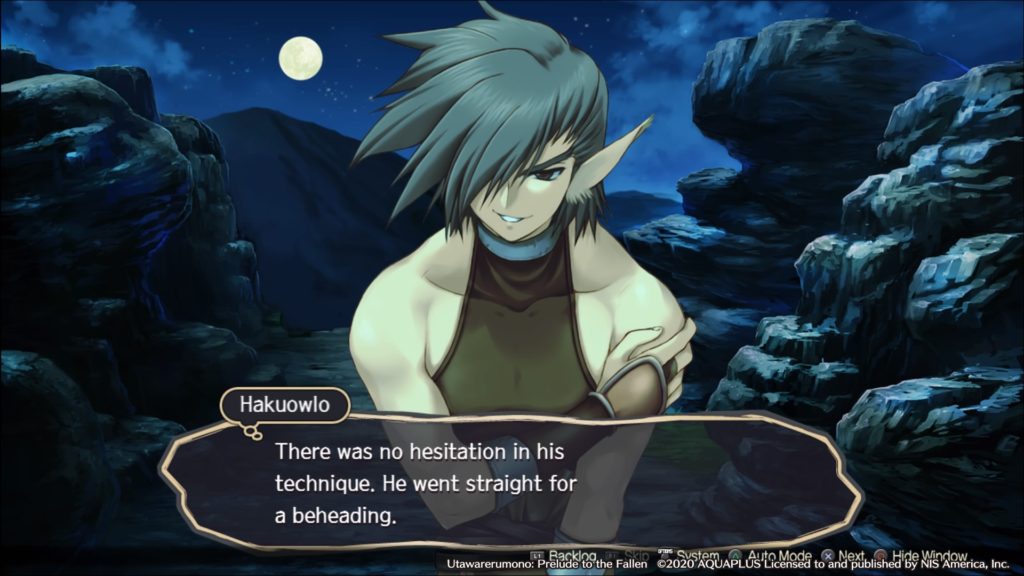
Now, while this is an excellent game, it certainly isn’t a fast one. The plot takes a solid three to four hours to really get moving and during that time you’re primarily reading. For hours. Visual novel aficionados will be familiar with this but for the uninitiated, it can be daunting in a game. Be prepared to sit and read. If you’re a slow reader, this will take a long time because all the voice acting is in Japanese, with no English dub. If you’re a faster reader, it won’t be as much of a struggle, but this isn’t the sort of game you’ll be playing late at night half-asleep. Regardless, the twists and turns of the plot will keep most people enraptured once things eventually get moving.
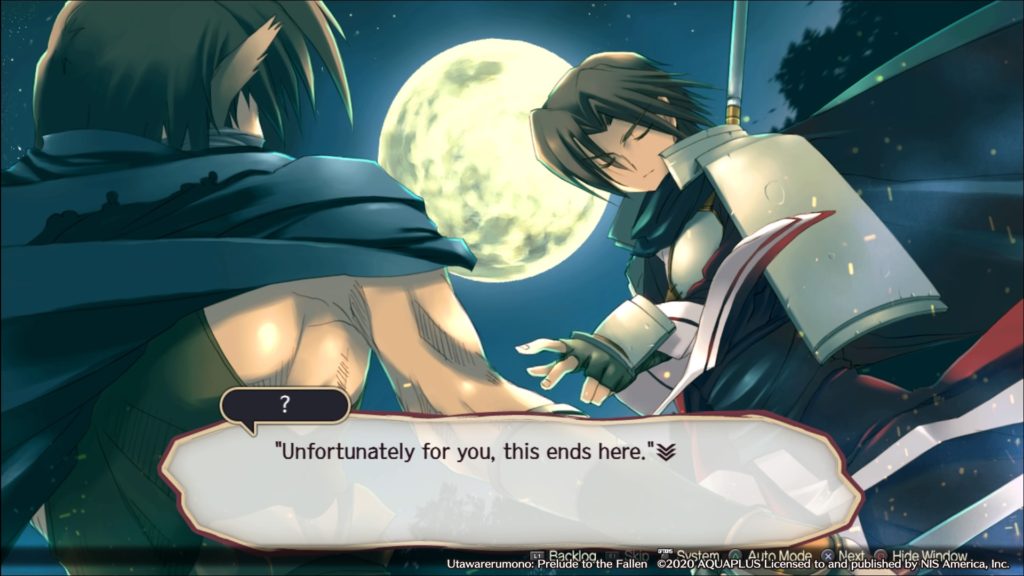
The other part of Utawarerumono is the strategy component. As you’ll eventually find out, Hakuowlo is a consummate tactician and you, ostensibly acting as Hakuowlo, are in control of the combat. During combat sequences, the game shifts to a 3D rendered grid-based tactical field and you have to fulfill the conditions of the fight, much like a Langrisser or Final Fantasy Tactics style of game. This is less complex than either of those titles, but many of the same elements still apply. Terrain, direction you face at the end of your turn, and range all matter here. So do strengths and weaknesses to elements and magic, as well as weaponry. Combat in Utawarerumono consists of turn based grid movement, combined with attacks, magic, and items as in most tactical games. You also slowly build up Zeal, which enables you to perform extra and more powerful attacks, eventually culminating in insane Final Attacks. As you level up, you can use characters with enough Zeal to combine their attacks in co-op chains and massively overpower enemies. It’s an incremental process and building up characters takes some time, but the combat is challenging and rewarding without being unfair or too tedious.
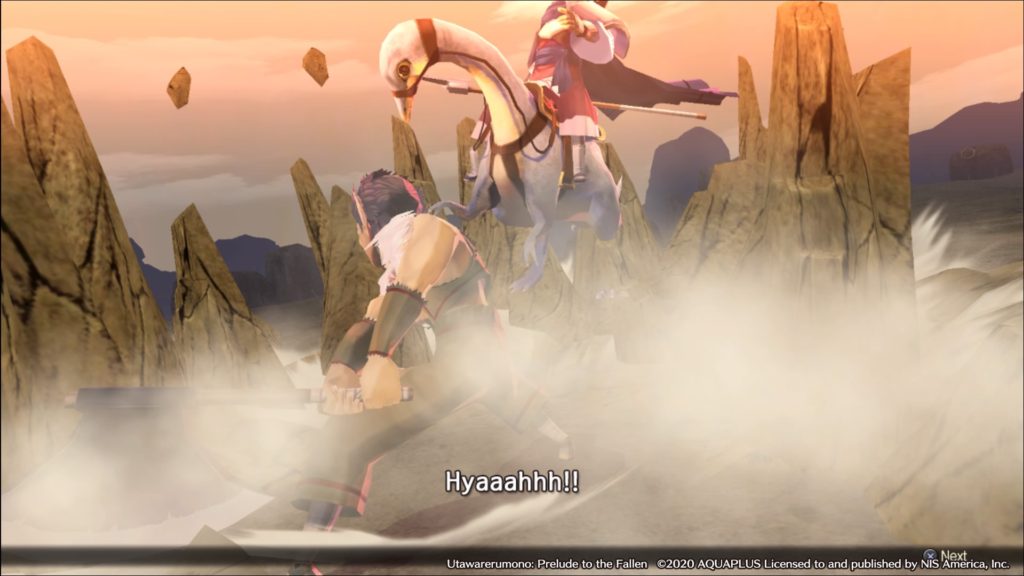
You might end up spending a fair amount of time playing the tactical portion of the game as well, since there’s a free play mode that allows you to revisit any tactical mission and replay it. This allows you to earn more experience and level characters as well as gaining extra items, some which you may have missed the first time through. Free mode is a welcome respite if you need a break from the text-heavy main portion of the game, allowing you to just take a break and play without focusing on the complex narrative. It’s also useful to get those levels up as playing through without a bit of grinding can result in some wins that are definitely by the skin of your teeth if you manage to survive!
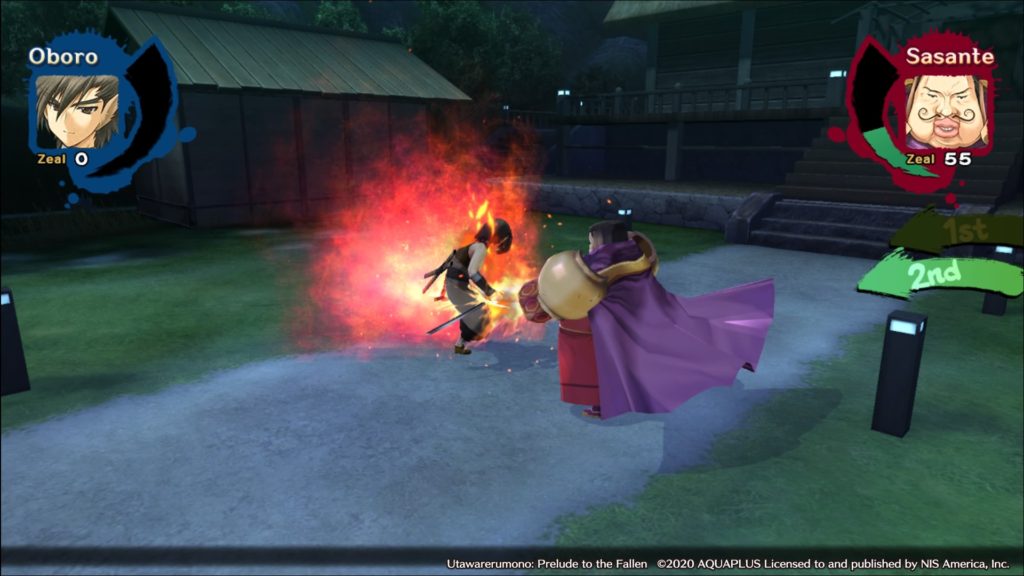
While the tactics involved in Utawarerumono are interesting and fun, the graphics leave a bit to be desired. Combat character maps are a bit underpowered for the PS4 and feel like less than they could have been. It’s slightly reminiscent of the PS4 updates of The Legend of Heroes: Trails of Cold Steel parts one and two, which were both upscaled to run on the PS4 but had less detail than they could or should have hard, especially in comparison to the third game, The Legend of Heroes: Trails of Cold Steel 3. The same applies here, where lush, luxuriant anime-styled artwork resonates throughout Utawarerumono and then suddenly the screen resembles an early to middle generation PS3 game. It’s bearable, but things could definitely look better in the tactical screens.
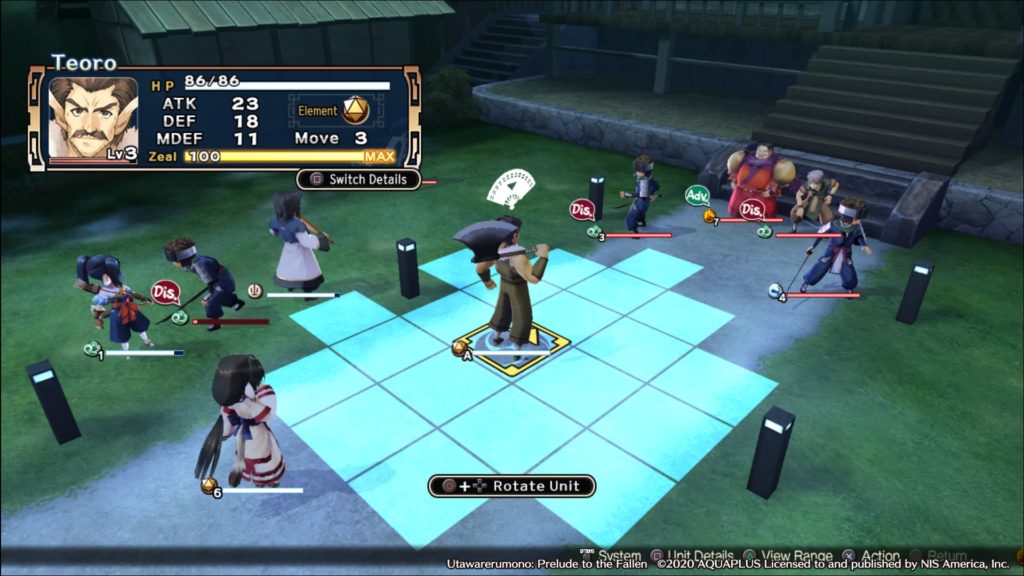
The story more than makes up for the graphics however, and even the dramatic scenes that take place during the tactical sections of the game are absolutely immersive. This is not a game for kids and people are outright slaughtered, sometimes when you least expect it! Content is adult, interesting, and complex and everything that happens meshes together bit by bit to weave the tapestry that is the beginning of the Utawarerumono trilogy. Music is also excellent, accompanying the gameplay without becoming stale or irritating, and most of the interfaces are quite good, although character management screens are a bit stiff and odd to use, resulting in some confusing sub-menus and options. The same goes for the tactical combat, which does take some trial and error. It’s a bit odd to move your character and not have them auto-target the enemy right next to them for example.
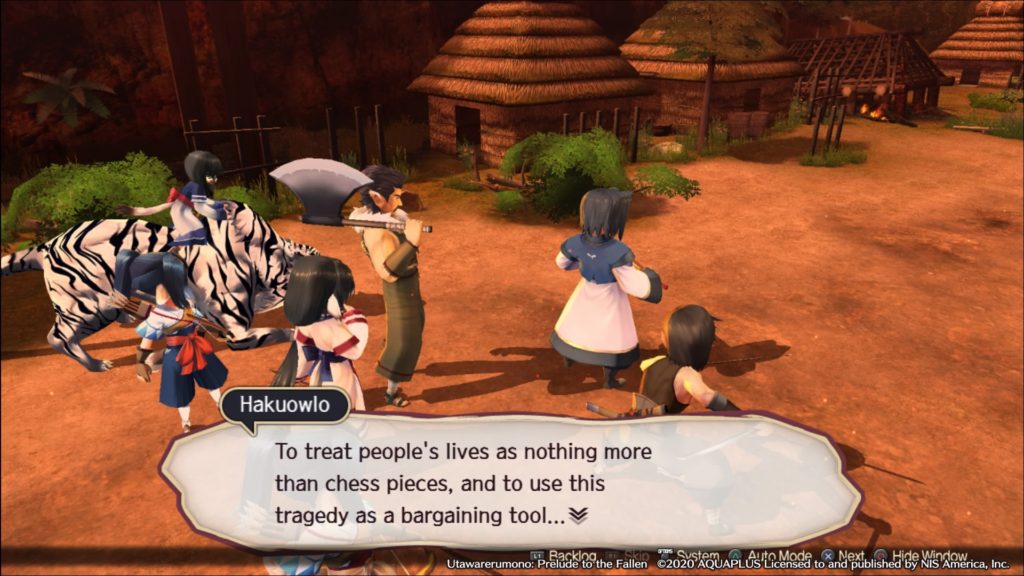
Regardless, this is an absolute emotional roller coaster of a story which more than makes up for any minor shortfalls in the mechanics. Hakuowlo and company take us into their lives and they feel real, talking and thinking in a way that’s so humanizing that you can occasionally forget that it’s just a story. On top of that, the supporting cast are outstanding, the voice acting, even in Japanese, is spot on, and the whole game simply weaves together into a narrative that few other visual novels manage. When all is said and done, you’re looking at around 40 hours of gameplay with Utawarerumono: Prelude to the Fallen, and that’s no small task with as much reading and tactical combat as there is in the game.
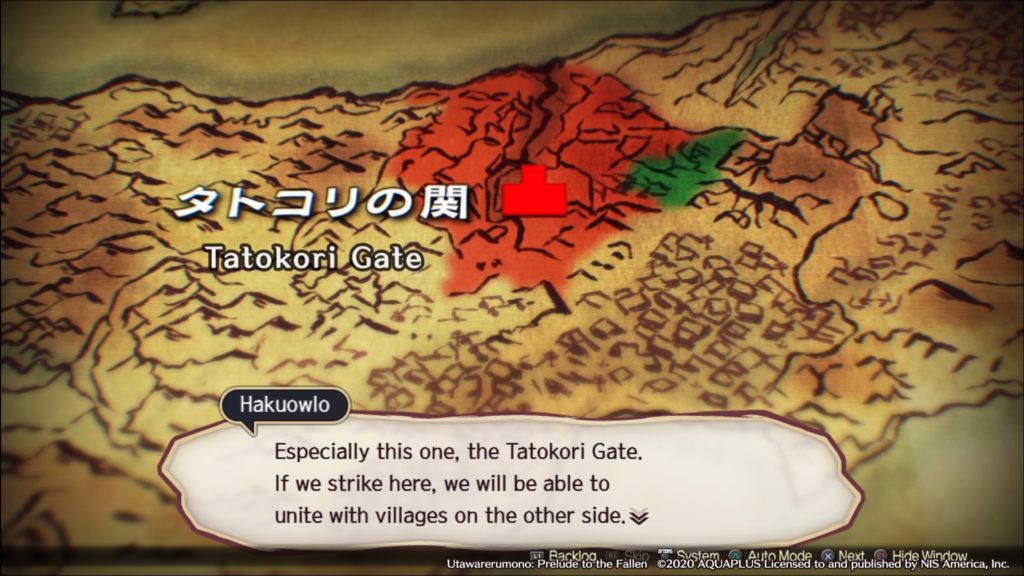
Fortunately, for the AAA price of $60, you’re definitely getting a fully fleshed-out AAA title here. On top of that, Prelude sets up the storyline to lead directly into Utawarerumono: Mask of Deception, another top-notch title that can be picked up for under $40 now, and the third game is only $18 on Amazon as of the writing of this article! As the beginning of an epic trilogy that should have been released years ago, Utawarerumono: Prelude to the Fallen is an absolute gem of a tactical visual novel that should not be missed!
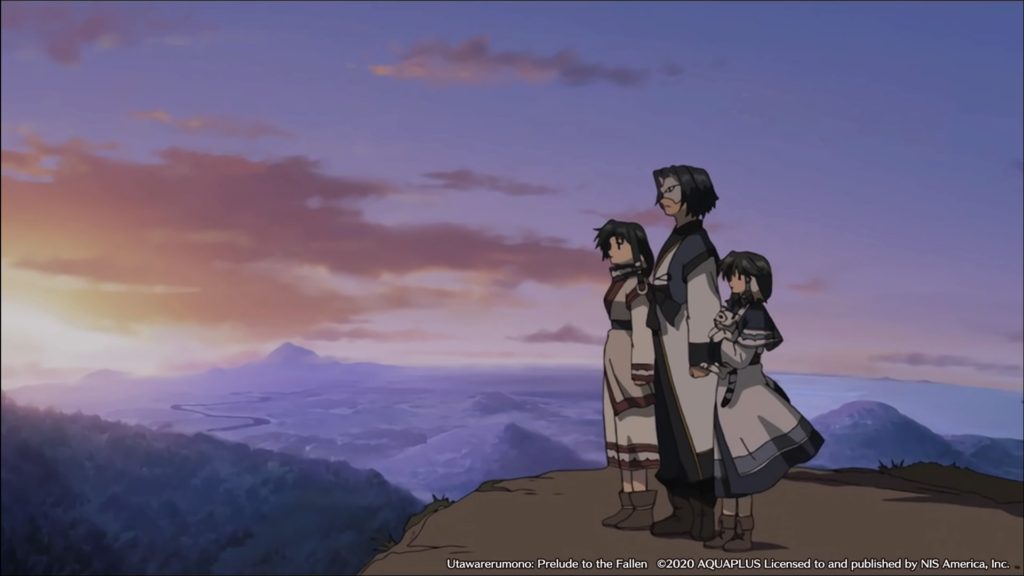
This review is based on a digital copy of Utawarerumono: Prelude to the Fallen provided by the publisher. It was played on a PS4 Pro with a Sony 55” LED TV. Utawarerumono: Prelude to the Fallen is also available digitally on the Playstation Vita. No physical Vita release is planned for the game as of the writing of this article. Spoilers for the storyline were specifically avoided in this review in both the imagery and text due to the nature of the game’s plot.

